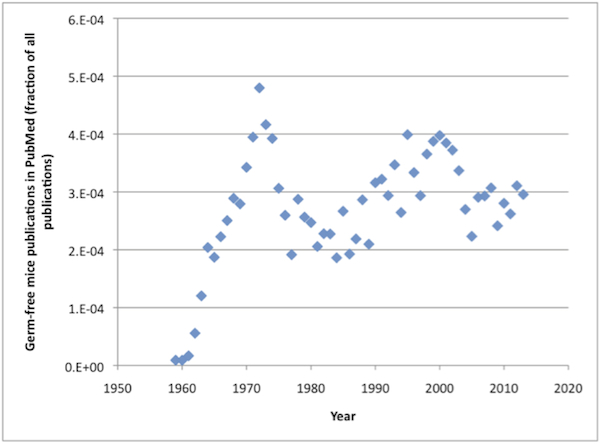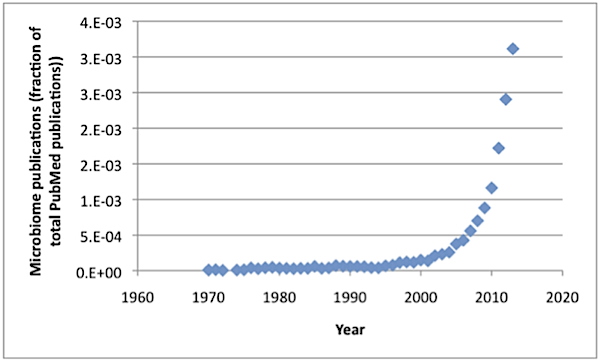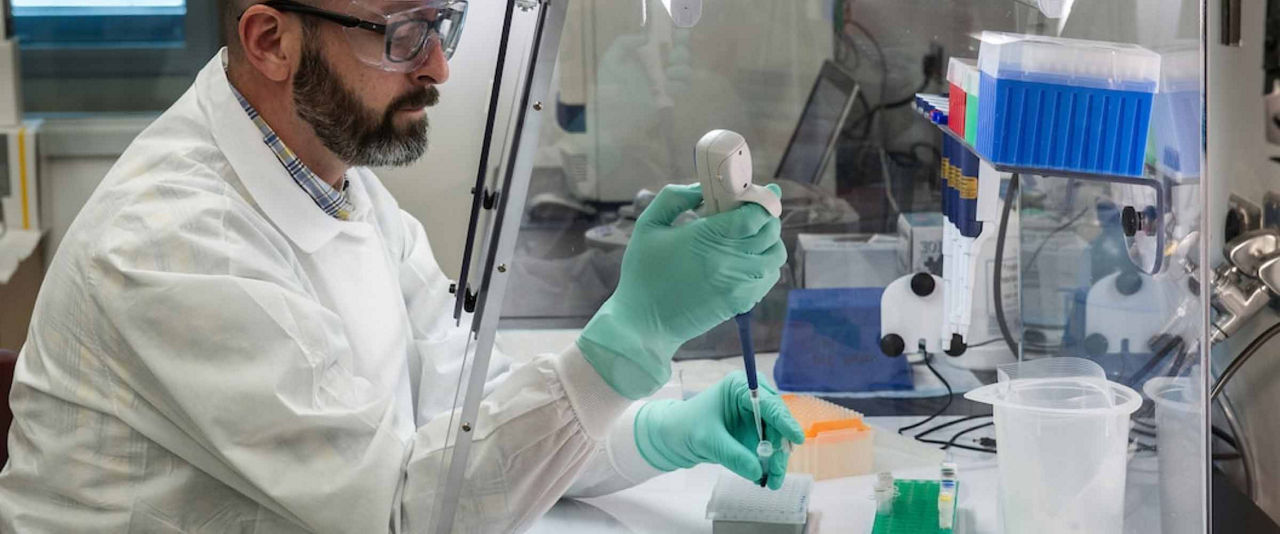"All of this indicates that the study of germ-free life has reached a certain maturity."
–James A. Reyniers, 1959
In the years immediately following Reyniers optimistic statement on the maturity of
germ-free technology, there was a burst of publications, which leveled off (with oscillations around a value) to a steady stream of activity in the following years. This leveling off indicates that, yes, interest in
germ-free mice has matured—growth is happening at the same rate as the general growth of literature in PubMed.

Figure 1: Fraction of papers retrieved with the PubMed search—("germ-free" OR gnotobiotic) mice—versus all papers.
At Taconic Biosciences, we think this situation needs to change. And it has everything to do with the microbiome.
Interest in the microbiome has been rapidly increasing (Figure 2) due to a clearer understanding of the microbiome's impact on a number of different physiological systems, as well as a realization that microbial communities can vary widely from person-to-person. A look at recent reviews on
microbiome research shows studies on the immune system,
2 glucose metabolism, and other metabolic pathways,
3 and cancer.
4 Given the importance of these systems, we were expecting to see an increase in the number of recent papers published using germ-free mice, but the fraction remains the same (Figure 1). Is this just an artifact of the way we're doing our search? Are researchers only just starting to use more germ-free mice and we'll see an uptick in publications in the coming years? Are researchers not interested in germ-free systems? Or is there just not enough funding right now?

Figure 2: Fraction of papers retrieved with the PubMed search—microbiome—versus all papers.
 Learn more about Taconic Biosciences' products or service supporting this field of research:
Learn more about Taconic Biosciences' products or service supporting this field of research:
References:
1. J.A. Reyniers. Germ-free vertebrates: present status. Ann NY Acad Sci. 1959. May 8; 78(1):1-16.
2. P.P. Ahern, et al. Mining the Human Gut Microbiota for Effector Strains that Shape the Immune System. Immunity. 2014 Jun 19; 40(6):815-823.


















.jpg)

.jpg)
.jpg)
.jpg)
.jpg)





.jpg)


.jpg)
.jpg)




.jpg)




.jpg)

.jpg)




